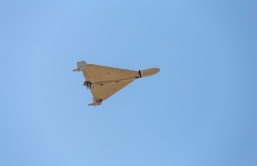Researchers thought the he El Niño Southern Oscillation in the tropical Pacific Ocean was much weaker in ancient days, but 10,000 year-old shellfish suggest otherwise.
The results call into question the ability of computer models to accurately determine past El Niño cycles and predict future ones, the University of Washington reported.
"We thought we understood what influences the El Niño mode of climate variation, and we've been able to show that we actually don't understand it very well," said Julian Sachs, a UW professor of oceanography.
"Our data contradicts the hypothesis that El Niño activity was very reduced 10,000 years ago, and then slowly increased since then," said first author Matthieu Carré, who did the research as a UW postdoctoral researcher.
In 2007 researchers sampled 25-foot tall piles of shells of Mesodesma donacium clams that were eaten and discarded.
Carré developed a technique to analyze the shell layers and determine their age as well as the water temperatures they were exposed to. Combining data from these shells can reveal the water temperature spanning the past 10,000 years.
The results suggest 10,000 years ago El Niño was much relatively strong, and not much weaker as past climate models had suggested.
In the past the computer models coupled with evidence of flooding in the Andean Lakes was interpreted to mean a weaker El Niño 10,000 years ago. This new method of determining past ocean conditions is more reliable.
"Climate models and a variety of datasets had concluded that El Niños were essentially nonexistent, did not occur, before 6,000 to 8,000 years ago," Sachs said. "Our results very clearly show that this is not the case, and suggest that current understanding of the El Niño system is incomplete."
The research was funded by the U.S. National Science Foundation, the U.S. National Oceanic and Atmospheric Administration and the French National Research Agency. The findings will appear in the upcoming edition of the journal Science.








